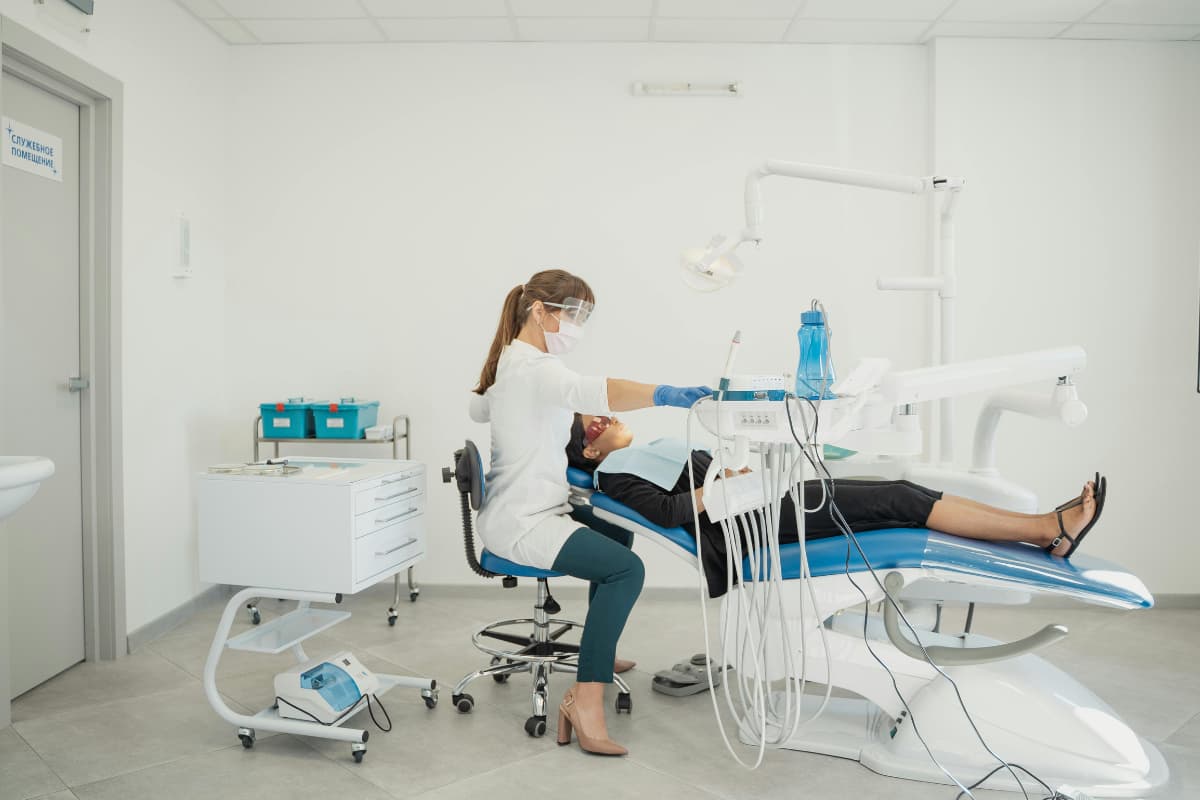Communication with patients in particular plays an important role in everyday practice. According to the Action Alliance for Patient Safety (APS), at least a quarter of medical errors are due to a lack of communication between doctors, MFAs and patients. Successful communication not only avoids mistakes, but also contributes significantly to a positive doctor-patient relationship and ensures the success of your practice.
But medical communication is complex: Every patient is different and has new interview requirements. What's more, there is simply a lack of time. The good news: Even small efforts bring great success in patient communication.
What is good doctor-patient communication?
As a doctor, your communication skills are also required in everyday working life; after all, it is one of the most important jobs in the medical sector. Starting with patient acquisition, counseling, treatment and long-term patient loyalty, successful patient communication forms the basis of a positive doctor-patient relationship.
And a lot has happened in this area! Good doctor-patient communication today focuses on patient-oriented communication on equal terms. It provides trust and comfort and meets the need for attention and recognition. So show a real interest in your patients and listen actively!
Tips for a successful patient interview
When communicating, do you also immediately think of the correct choice of words and the way of speaking? That is definitely important! However, this takes place even before you speak a single word. Non-verbal communication, i.e. gestures, facial expressions and your body language, has a major influence on doctor-patient communication.
Tip 1: Shared decision making — achieving the goal together

In so-called “shared decision making,” doctors and patients form a team. Together, you decide on the diagnosis and treatment option. This type of doctor-patient relationship is trending: According to a Witten/Herdecke University study More than two thirds of all patients would like to participate in finding a treatment. Almost half are also looking for information in order to be able to have a say.
Practical example: In everyday practice, for example, you can explain your path to diagnosis. This creates appreciation and commitment, and you turn treatment goals into patient goals. that Basic paper from the Department of Data, Demography and Quality (DDQ) deepens the topic.
Tip 2: Avoid technical jargon
During your doctor-patient consultation, don't forget that a medical layperson is sitting across from you. The question of whether the pain is more lateral or medial is not self-evident for many. Speak the language of your patients instead. Avoid specialized vocabulary and use simple words to describe connections.
Tip 3: Ask the right questions
Because this does not always work well, use the questioning technique at the end of your patient consultation. It is best to let your patients describe the diagnosis or treatment method in their own words. Ask open-ended questions as well. As a result, your counterpart feels heard and taken seriously.
Tip 4: Communicate patiently
Your time is limited, the waiting room is full and the extensive documentation is piling up — yet: listen to your patients. Easier said than done, as these are usually interrupted after just 18 seconds. But it is precisely because of this that your counterpart feels time pressure, becomes nervous and loses important information. Accept the situation and get involved with your counterpart.

Tip 5: Create trust
A successful doctor-patient conversation can also satisfy patients' need for attention and create security and trust. Make sure that:
- Call your counterpart by name,
- you maintain eye contact
- Talk to your interlocutor: and
- back up your statements with a straight and open posture.
The correct treatment of patients through MFAs and ZFAs
Doctor-patient communication starts even before the consultation: From the first telephone call to registration at the reception to leaving the practice, there are various points of contact. Communication within your practice team is also part of patient communication. Smooth processes, friendly service and a pleasant atmosphere are just as important as individual attention. Patients in particular often perceive the working environment very sensitively.

Tip 6: Pay attention to your Internet presence
Patients are already contacting you outside the practice. For example on the Internet or on the phone. Therefore, make sure you have a clearly structured website and list your opening hours on Google. When making a phone call, your Medical Assistant (MFA) Always introduce yourself by name in a friendly way.
Tip 7: Friendly and attentive reception
As is well known, the first impression counts. MFAs and ZFAs therefore play a central role in dealing with patients. Make sure you have a clean entrance area, a friendly greeting and signal attention through eye contact.
Even a small talk while drawing blood or a friendly question about the current state of health convey a positive and appreciative attitude.
Tip 8: Set clear deadlines
“I've been waiting here for hours! “— Discontent about long waiting times in medical practices is a frequent point of criticism among patients. Employee and patient perceptions often do not match.
“Please take a seat in the waiting room for a minute! ” or “They're about to go! “convey misconceptions. Therefore, avoid giving subjective dates and, if possible, try to reduce long waiting times by making appointments in an organized manner.
Tip 9: Team meeting in the doctor's office
Regular team meetings strengthen the sense of togetherness and motivation. They also promote the flow of information and resolve conflicts. Experts advise doing this once a month if possible.
Tip 10: Save time with Nelly
Successful doctor-patient communication has a lot to do with your available time. Nelly helps you and your team save valuable time and annoying administrative work:
- Nelly enables a digital anamnesis and automatically documents all information in your system
- Treatment-related documents can be sent easily and in encrypted form
- You can bill private and self-paying services with one click
- Lots of documents can be signed digitally and in compliance with the law

Better doctor-patient communication with Nelly
Thanks Nelly Digitize your day-to-day bureaucratic practice. This saves valuable time and reduces unnecessary miscommunication. So that you can start a targeted doctor-patient conversation right away. Wir advise you without obligation and free of charge to your individual case!
sources:
- https://teamentwicklung-lab.de/aerztliche-gespraechsfuehrung
- https://www.aerztezeitung.de/Politik/Gute-Kommunikation-macht-Behandlungen-sicherer-299328.html
- https://aerztestellen.aerzteblatt.de/de/redaktion/arzt-und-klinik/arzt-patienten-kommunikation-so-gelingen-gute-gespraeche
- https://www.aok.de/gp/praxispersonal/patientenkommunikation
The personal names used in this article always refer equally to all persons. Dual naming and alternate names are omitted in order to improve readability.












